From arugula to sorrel, we’re covering the most popular types of lettuce from A to Z in this helpful guide to lettuce varieties!
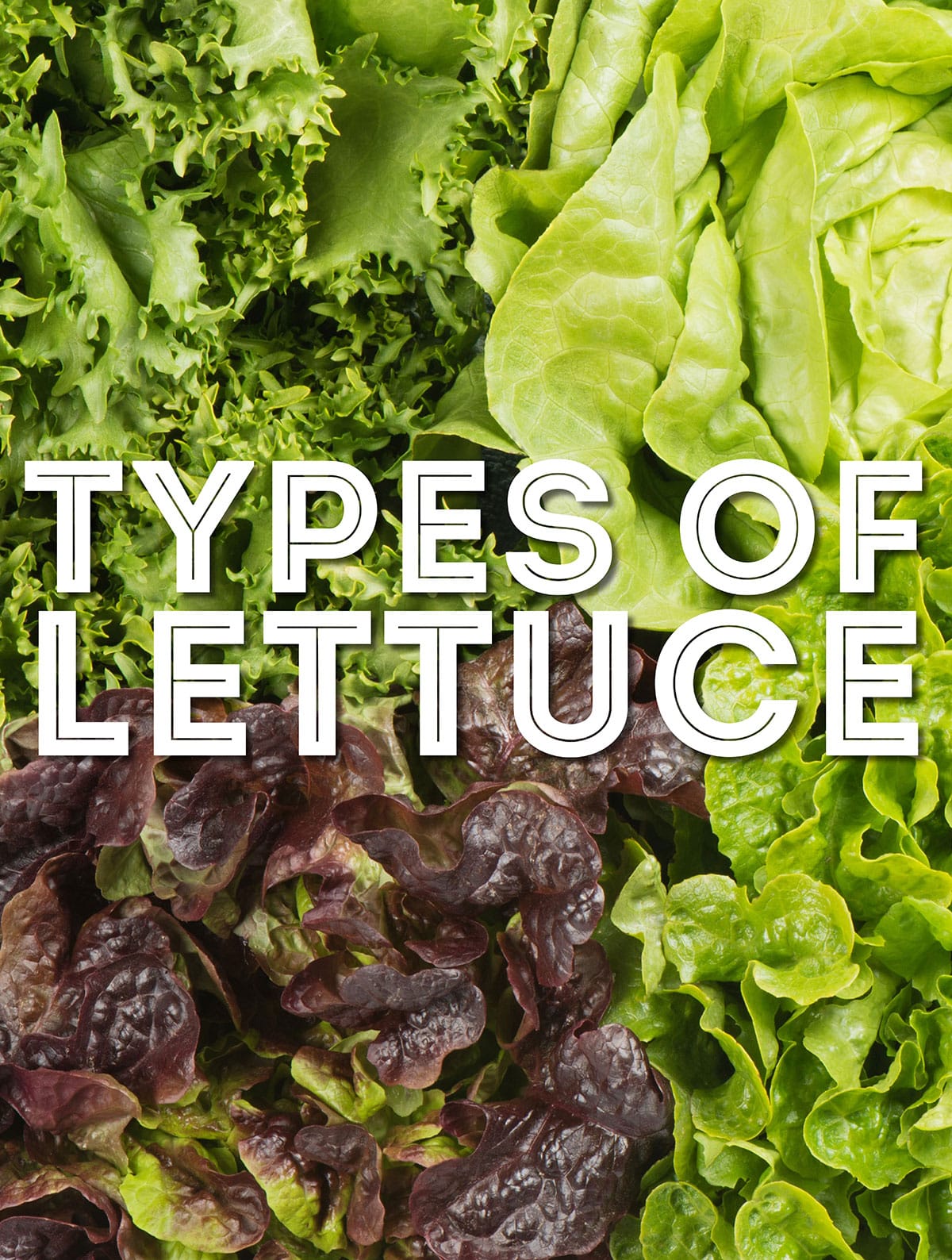
Lettuce is one of the most widely consumed leafy vegetables in the world, and for good reason. Not only is it low in calories and high in fiber, but it’s also packed with essential vitamins and minerals. From the classic iceberg lettuce to the more exotic mizuna and radicchio, there’s a lettuce variety out there for everyone.
Whether you’re a salad enthusiast, a health-conscious eater, or just looking to switch up your usual greens, this post will introduce you to some of the most popular and lesser-known types of lettuce. So, let’s dive in and explore the world of lettuce!
Lettuce Trivia!
Which type of salad traditionally contains romaine lettuce? The answer is at the end of this post!
a. Chef salad
b. Greek salad
c. Caesar salad
d. Waldorf salad
Types Of Lettuce
There are four main types of lettuce:
Crisphead Think Iceberg lettuce. These have a tight round shape and are crisp and crunchy.
Butter Lettuce varieties are round like crisphead, but not as tightly packed and the leaves tend to be smoother than with crisphead varieties. This is a soft, leafy, delicious type of lettuce.
Loose Leaf varieties are loosely held together which allows you to cut off individual leaves vs harvesting the whole head as you would a crisphead variety.
Romaine Lettuce varieties are known for their long leaves. Romaine takes on more of a bitter flavor, while iceberg lettuce has a mild sweetness to it.
Within each of these categories are many different types of lettuce. Click the links below to jump around the post, or scroll on to explore some of the most popular types of lettuce!
- Arugula
- Baby Beet Greens
- Batavia Lettuce
- Boston Lettuce
- Butter Lettuce (Butterhead)
- Coral lettuce
- Cress
- Chrysanthemum Greens
- Dandelion Greens
- Endive
- Escarole
- Frisée
- Iceberg Lettuce
- Little Caesar Lettuce
- Little Gem Lettuce
- Looseleaf Lettuce
- Mâche
- Mesclun
- Mizuna
- Oak Leaf Lettuce (Oakleaf)
- Purslane
- Radicchio
- Romaine Lettuce
- Sorrel
- Speckled Lettuce
- Stem Lettuce
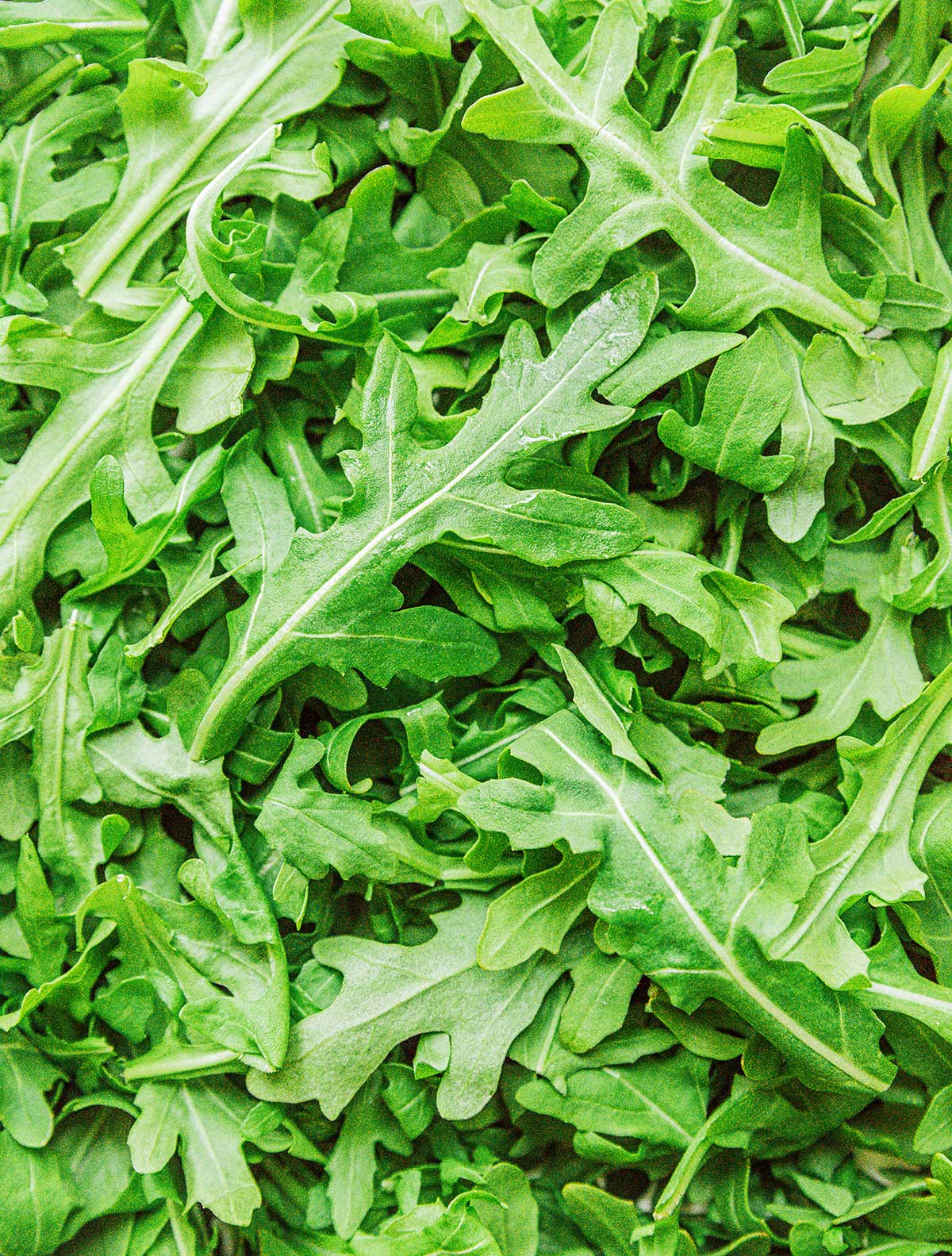
Arugula
Arugula is also commonly called Rocket, Rucola, and Rugula. Arugula originated in the Mediterranean likely before the Ancient Roman era. It was used back then for medicinal purposes and as an aphrodisiac. Today it is a commonly used leafy green mixed into salads or cooked into a variety of cuisines. Arugula is slightly tart with a peppery taste. For a whole lot more on arugula to include nutrition info, how to prepare, store, and cook with arugula check out Arugula 101. Try it in these Arugula Grain Bowls or on Rocket Pizza.
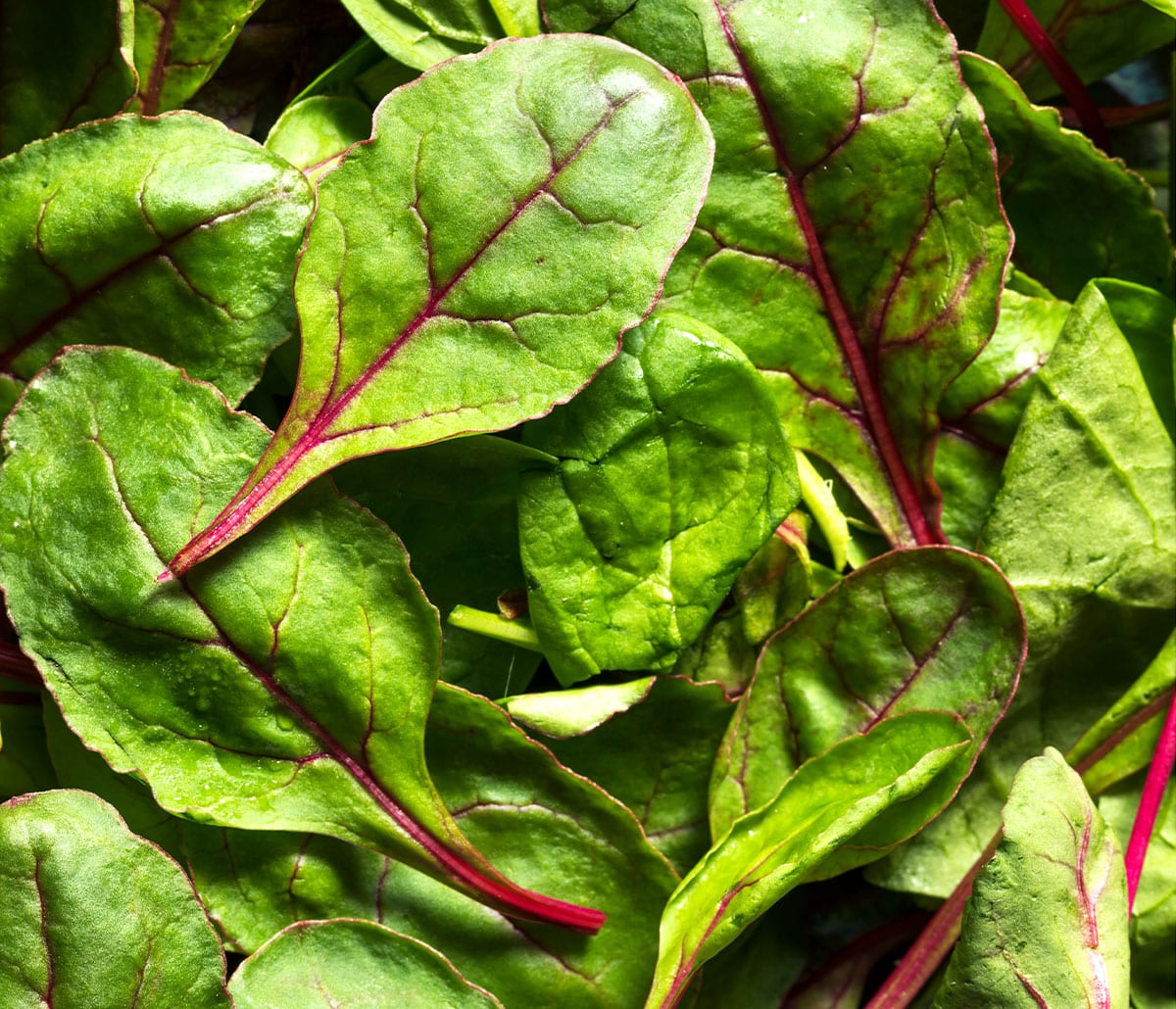
Baby Beet Greens
The leaves of beet tops, when young and immature, make great salad greens. Young, they are tender and a bit spicy. They are noted for the purple-red veins which can give your salad mix an aesthetic look.
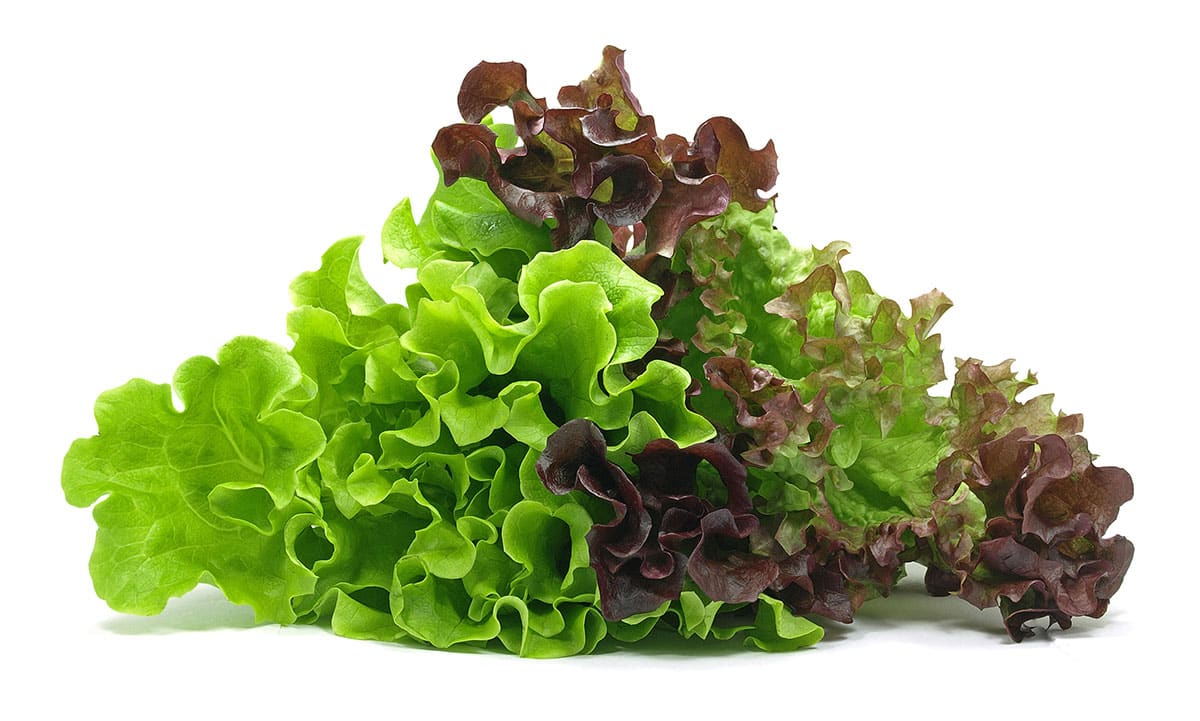
Batavia Lettuce
Batavia is known for being sweet and crisp coming in green or reddish-brown colors. It is a looseleaf lettuce, so you can simply cut what you need for your recipe, wraps, or salad, and leave the rest in your fridge or growing in your garden. Try it in these Vegan Lettuce Wraps.
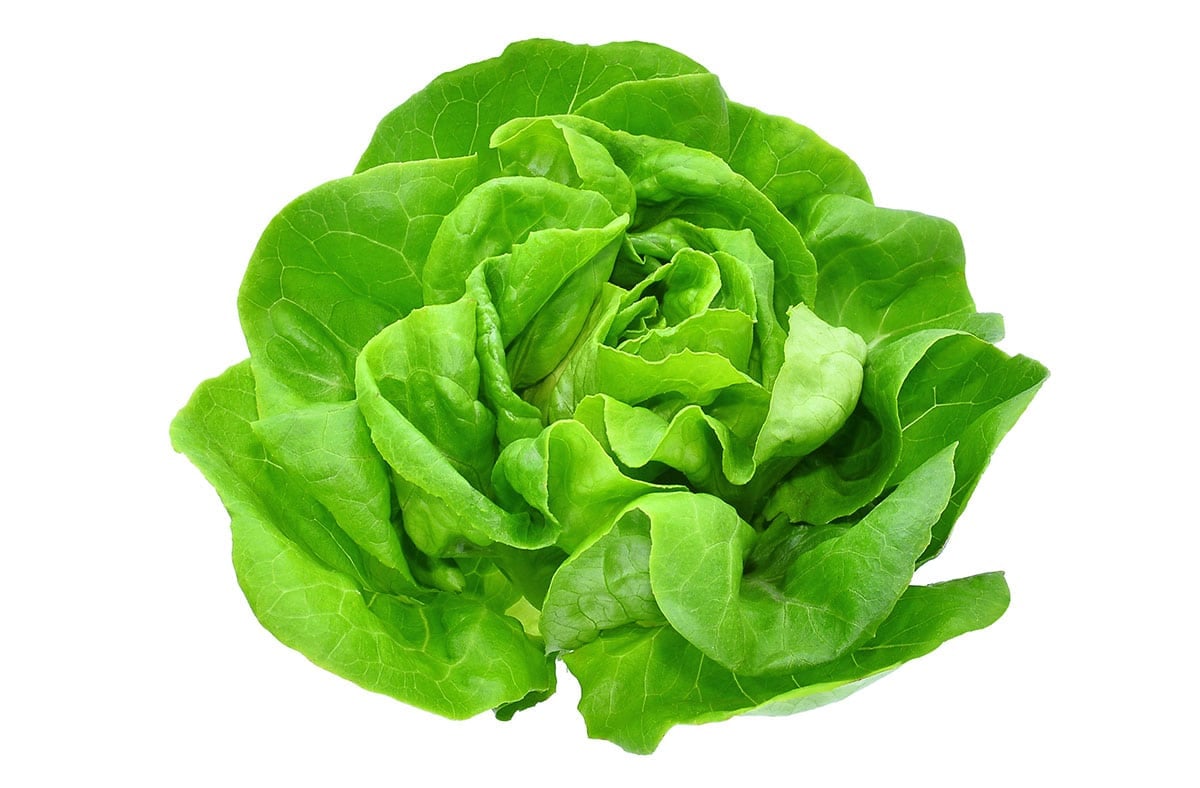
Boston Lettuce
Boston lettuce is a popular variety of butter lettuce (Bibb). The primary difference between Boston lettuce and Bibb appears to be the larger heads produced by the Boston lettuce variety. The tender leaves have a mild taste and are great in tacos, wraps, or in any salad. Try Boston lettuce in this Summer Strawberry Salad recipe.
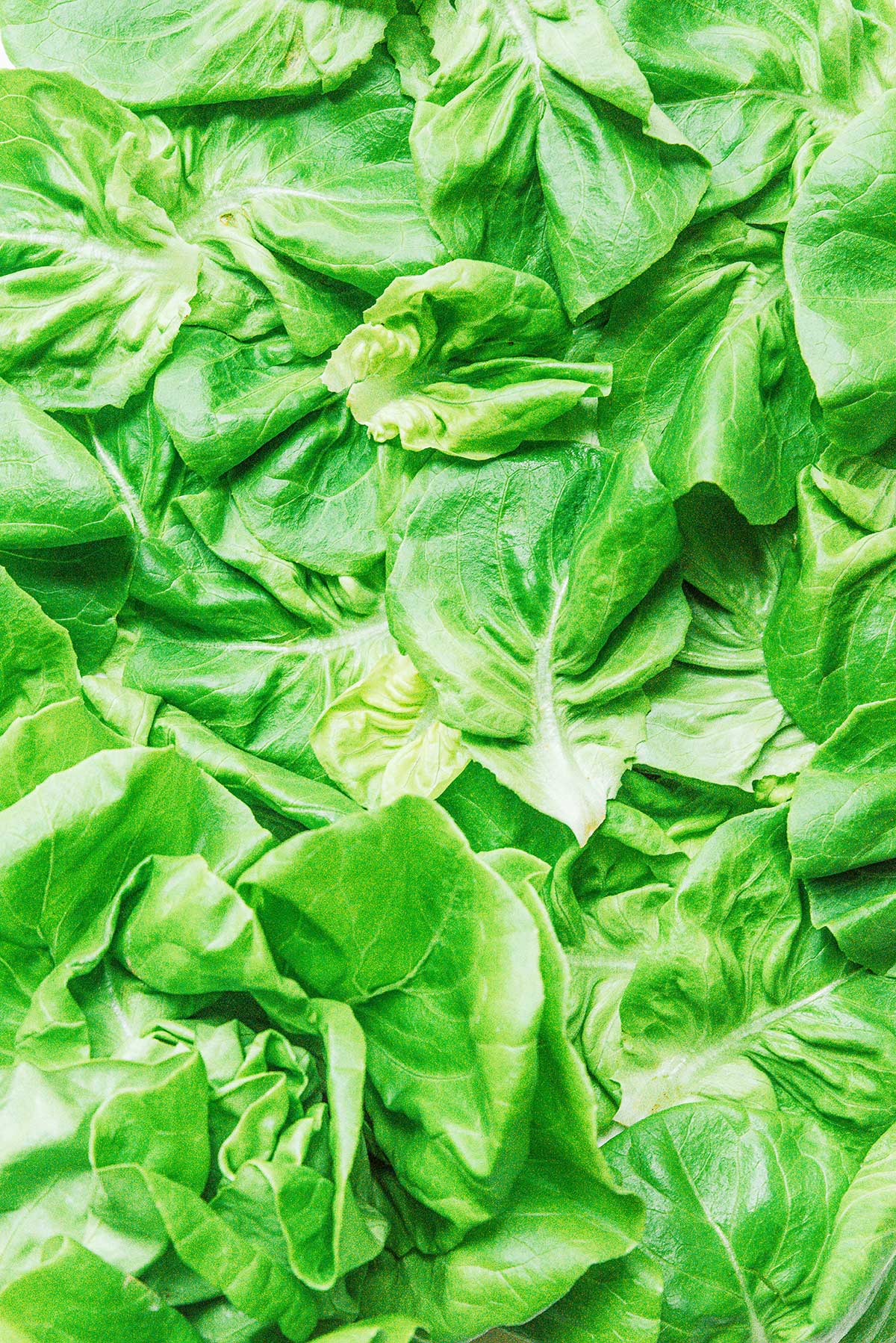
Butter Lettuce (Butterhead)
Butter lettuce, often called butterhead lettuce or Bibb, got its name due to its buttery flavor. The name Bibb came from John Bibb who developed this type of lettuce in Kentucky in the 1860s. It can look something like cabbage since it is generally red or green. If you ranked all lettuce varieties on a scale with crunchy and watery on one end, and leafy and soft on the other, iceberg and butter lettuce would be on the two ends. While Iceberg lettuce is crunchy and watery, butterhead is soft, leafy, and delicious in so many ways! As mentioned above, butter lettuce tastes how you’d expect — buttery and sweet. It is a great choice for salads, wraps, tacos, and sandwiches.
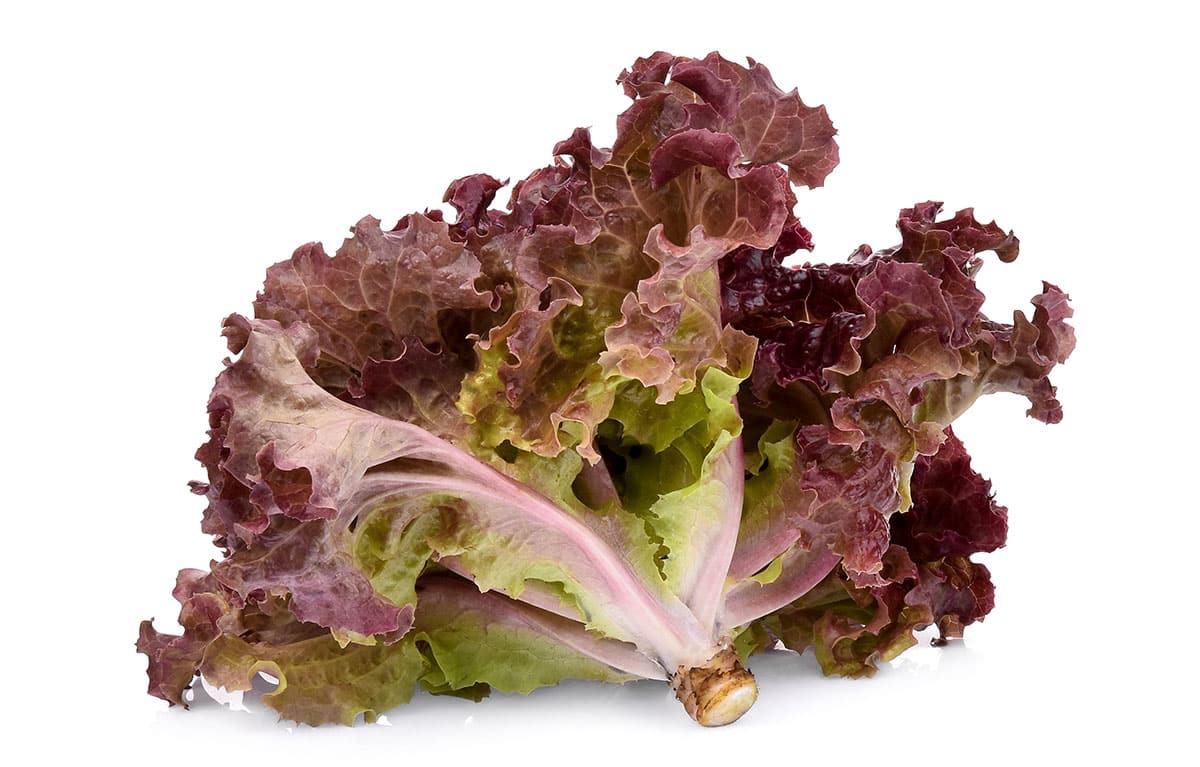
Coral lettuce
Coral is a looseleaf variety that can be green, red or speckled, and is known for its mild flavor. Coral has tight curls which tend to hold dressing making it a good salad choice if you like your salad with lots of dressing.
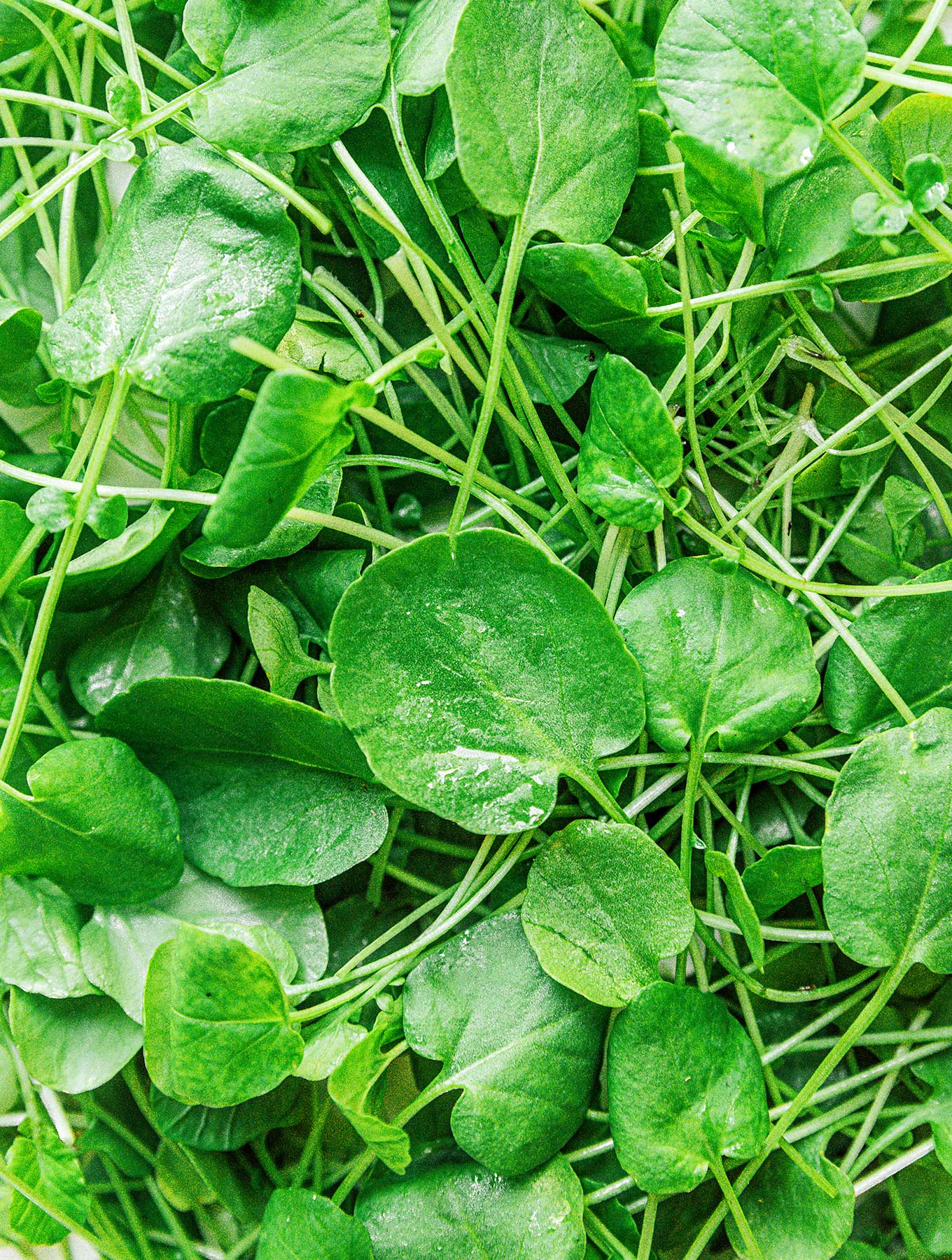
Cress
Cress is one of the oldest leafy greens eaten by humans and comes from the family of mustard and cabbage which gives its small delicate leaves a distinct spicy, peppery, and pungent flavor. While you should always wash any vegetable before eating, be particularly diligent with cress as it grows in water or sandy soil and will often come to you from the grocery still sandy. These greens are a good salad add, but can also form the salad base as in this Watercress Citrus Salad. There are four main varieties of cress.
- Watercress: Is grown, as its name suggests, in water, and has the most pungent flavor of the varieties.
- Garden Cress: This variety is grown in soil and has a spicy flavor some liken to horseradish.
- Upland Cress: Is noted for its thinner stem and more delicate flavor. This variety often comes in plastic bags, with the cress still attached to the roots.
- Korean Watercress: This is a distinctly more crunchy and bitter cress variety.
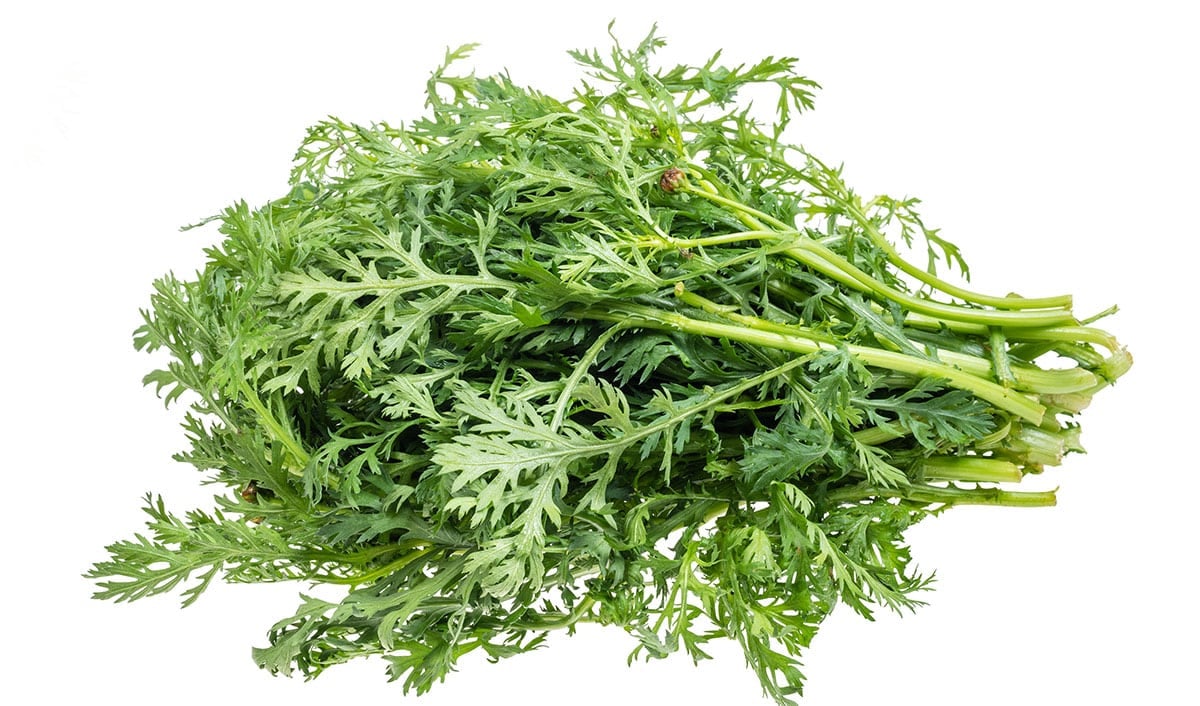
Chrysanthemum Greens
These greens come from the chrysanthemum flowers we grow in our gardens, and are often just called mums. They originated in China, and references to them appear in Chinese writing as early as 1,500 BCE. Mums were used as an herbal remedy by the ancient Chinese. They reached Europe sometime in the 17th Century. While today we still value them globally for their beauty, they also have their place in our salad bowls. The petals and sprouts are a great add to any salad and give it an extra nutritional boost. You are best to cut them young as the larger they grow the more bitter they become.
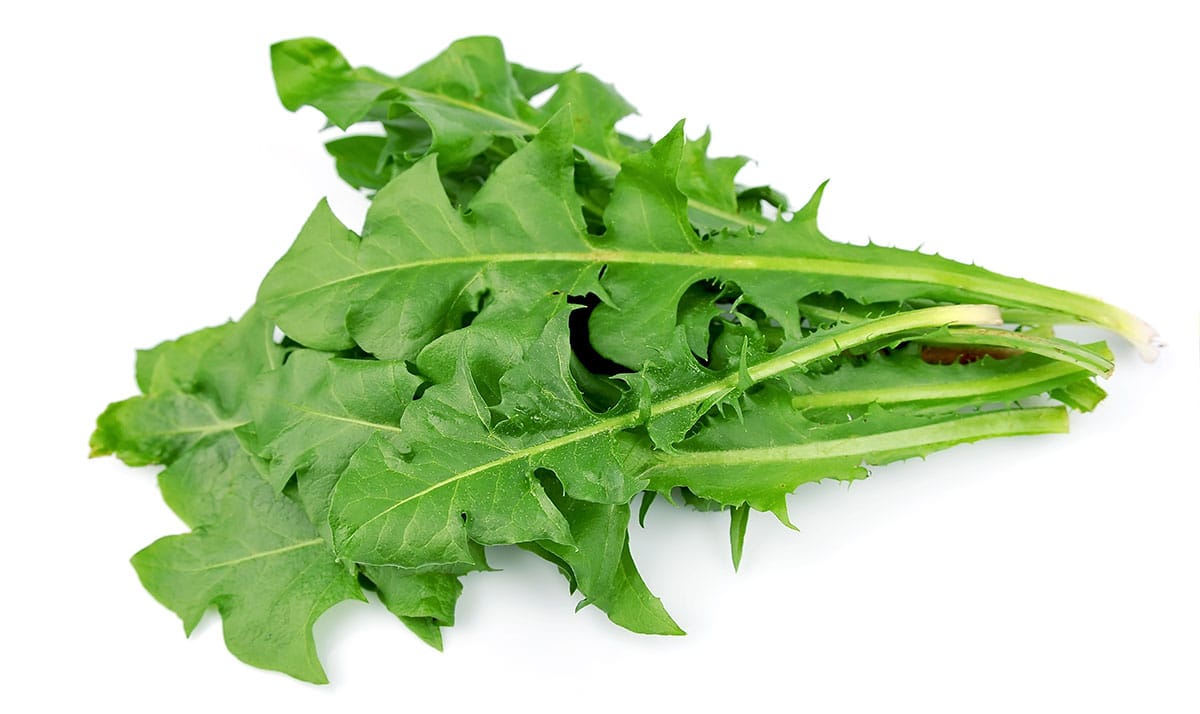
Dandelion Greens
These greens are probably the ultimate free salad green. Our yard in the Highland Area of Denver is tiny, but these “free greens” find their way into that little patch. The parts you want are the green and red leaves that grow along the stem. The leaves are best young as, like most greens, they become more bitter with age. Once they get larger, you will want to cook them to mellow the taste.
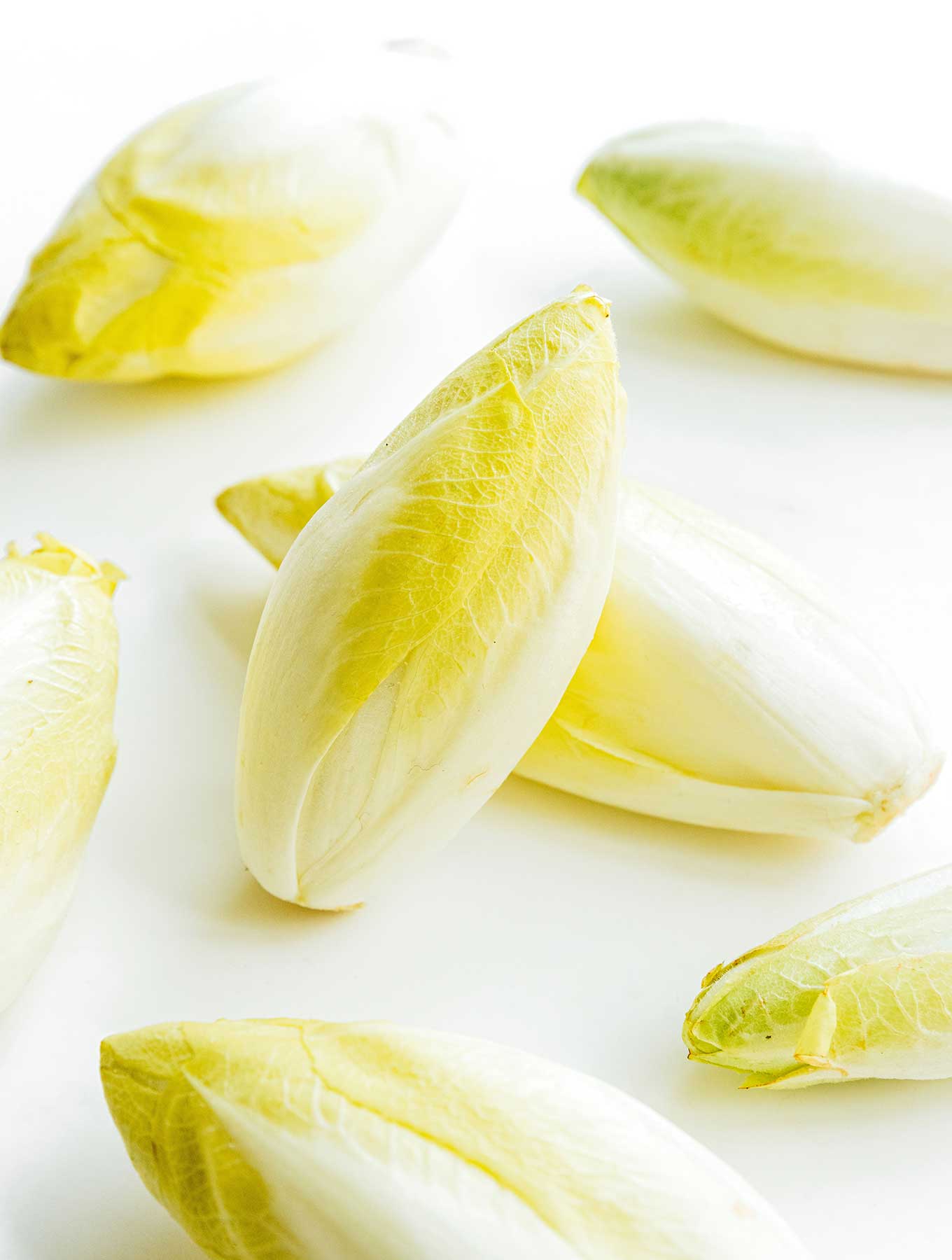
Endive
Endive is also known as Belgian endive, Belgian chicory, or French endive. Endive is actually a type of chicory, and is distinctive for its oval shape and smooth texture. It usually has a touch of bitterness and is a good salad addition, but the best use is as an appetizer. Peel off the scoop shaped leaves and use them instead of chips or hard veggies with your favorite dip or salsa. The leaves only have about 1 calorie each which is a fraction of the caloric content in a pita chip. It is also great cooked as in this Endive Gratin recipe. For everything you could ever want to know about endive check out Endive 101. Finally, take a look at the nutritional info on endive at the start of this post. It is as nutritious as other greens, but in different ways (very high in fiber for example). Add it to your salad to get an extra nutrition boost.
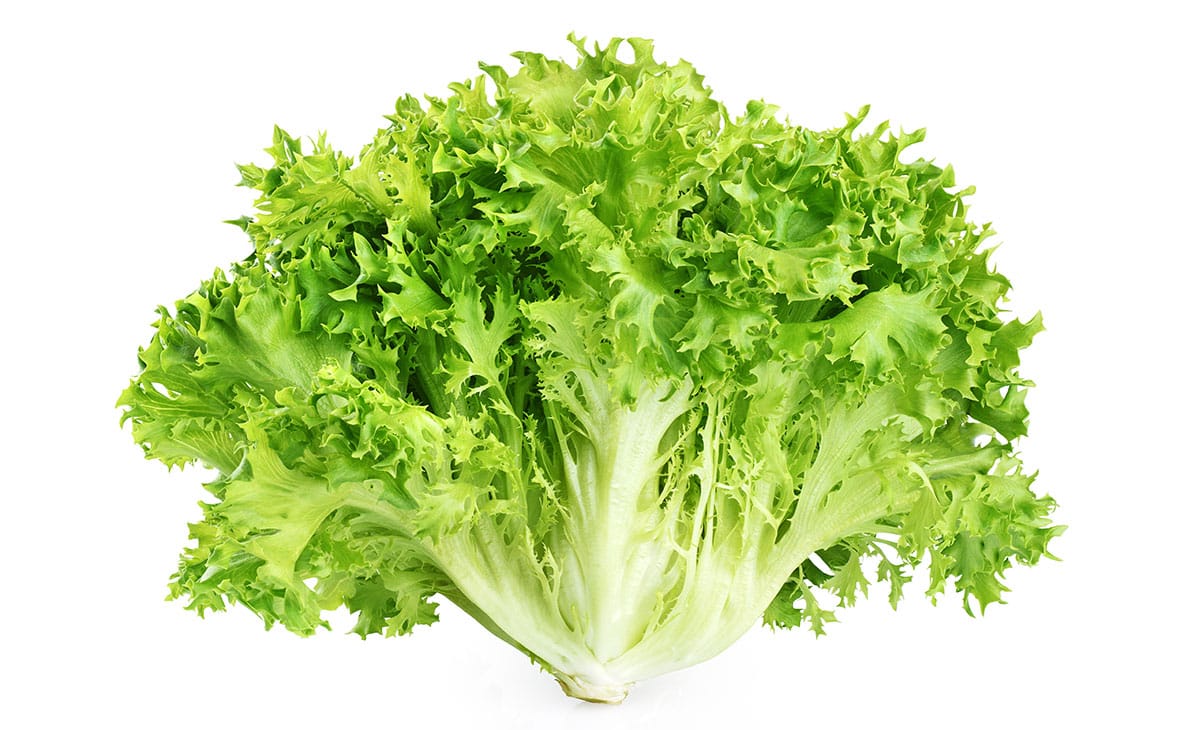
Escarole
Escarole is also known as Batavian endive or Broad-leaved endive and is a variety of chicory. It is noted for its large, bitter, and crisp leaves, and is often used in Italian cuisine. The plant’s inner leaves tend to be less bitter and more tender making them an ideal salad component, though you can expect it to be a more expensive green than most lettuce varieties. The outer leaves are best cooked.
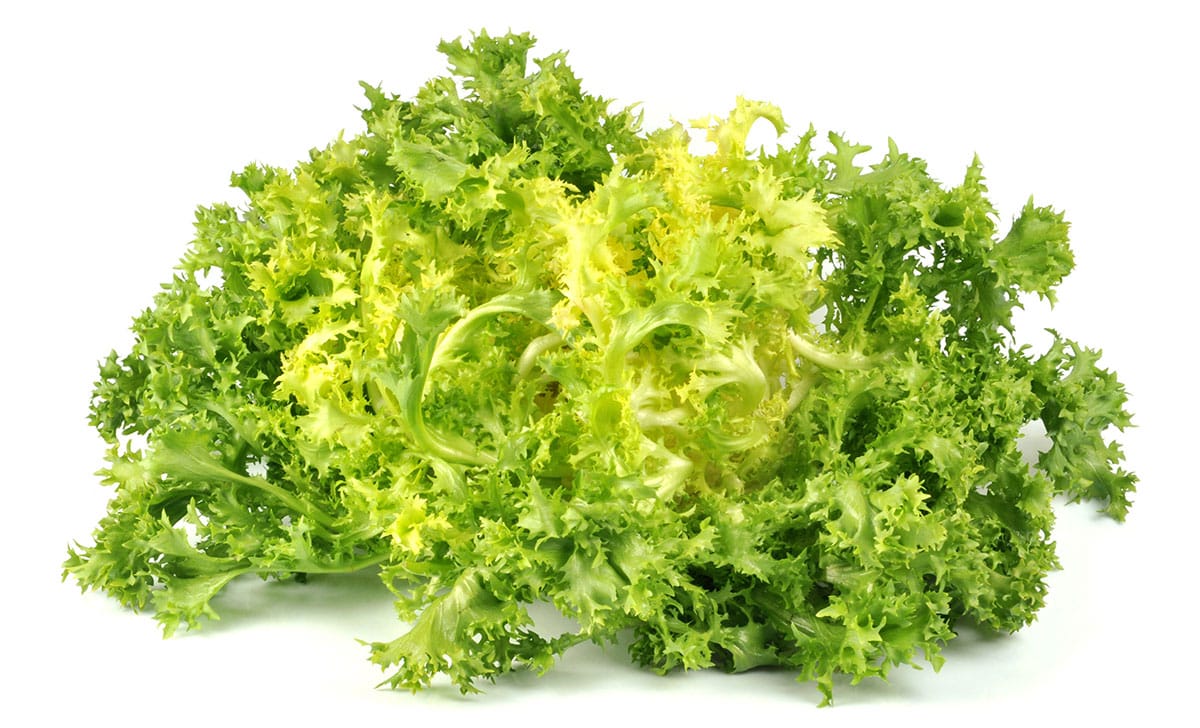
Frisée
Frisee is also known as curly endive, chicory endive, or curly chicory. It is a type of chicory with pale-green, yellow and white curled leaves. Frisee is quite bitter, so it is best used in recipes that mask this bitterness. Perhaps one of these lettuce recipes will peak your interest!
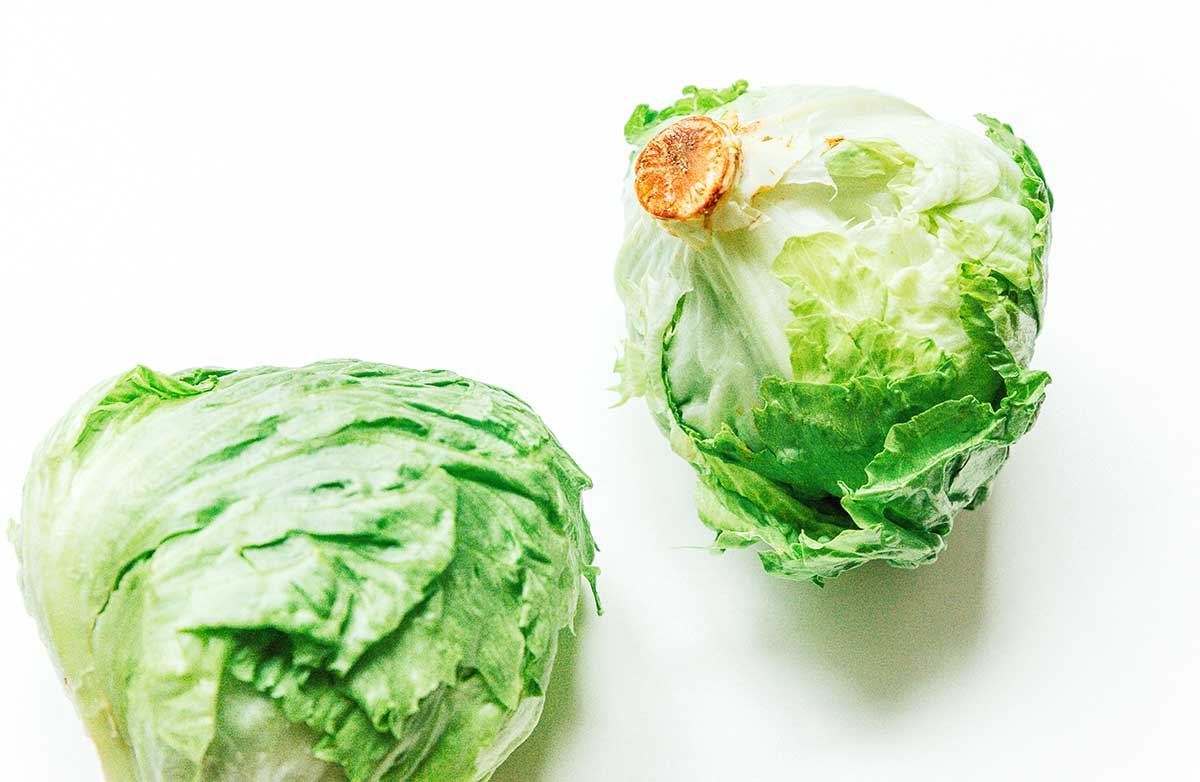
Iceberg Lettuce
Iceberg lettuce is the variety many of us grew up with. It is crisp and watery. It almost seems like you drink a glass of water when eating an iceberg salad. Iceberg lettuce is great in tacos as the crunch adds so much to a good taco. Use it in your salads, and its slightly sweet flavor will compliment the other ingredients just perfectly. The classic Iceberg recipe is, of course, a Vegetarian Wedge Salad. Give this slight twist on an old favorite a try. A final word on iceberg lettuce nutrition. Many people say that iceberg lettuce is just water and fiber with little nutritional value. This is just not the case. Take a look at the nutritional chart at the top of this article, and you can see that while it isn’t the nutritional dynamo that Spinach or Arugula are, it is a solid healthy base for your salads.
Little Caesar Lettuce
This is a type of romaine lettuce developed in Mexico in the 1920s specifically to be used in caesar salads. It has smaller leaves that are green on the outside and yellow on the inside. You can easily home grow your own and use them in your favorite Caesar Salad.
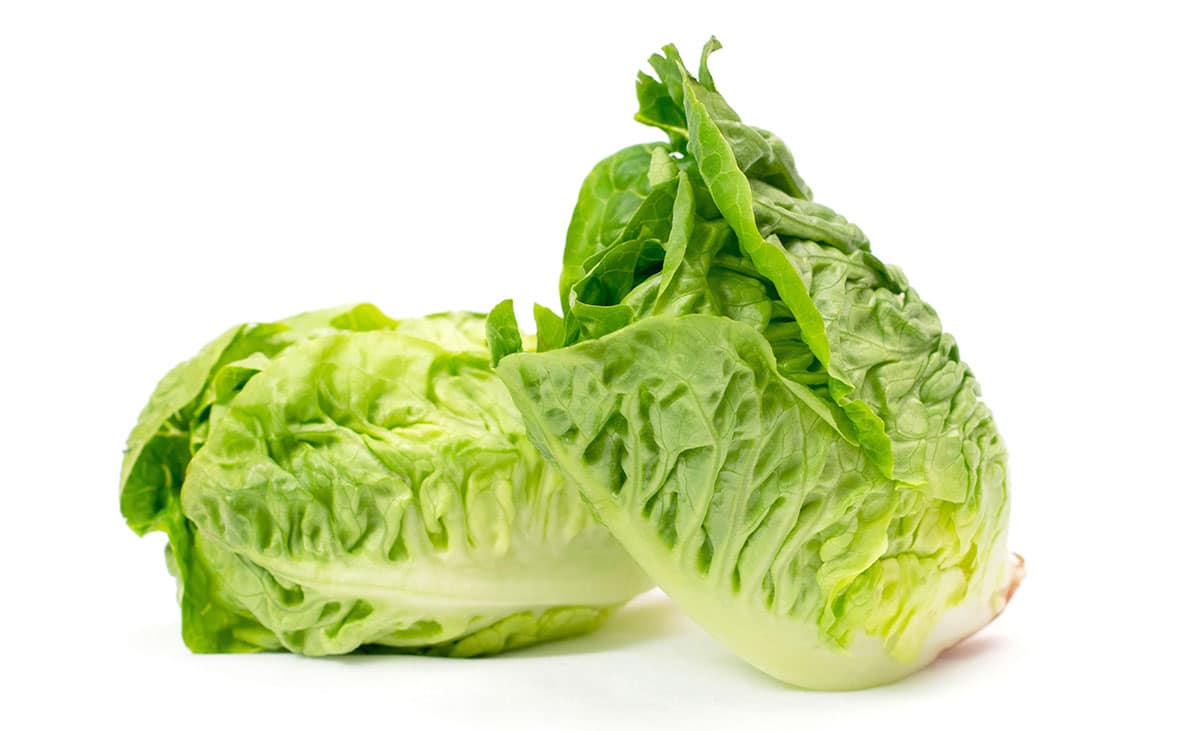
Little Gem Lettuce
This lettuce is also known as Baby Gem or Sucrine, and resembles baby romaine lettuce. Its small leaves are sweet and crisp, and are a great add to your salads, wraps, or burgers. Consider using them in this Grilled Romaine Salad, but as an hors d’oeuvre given their small size.
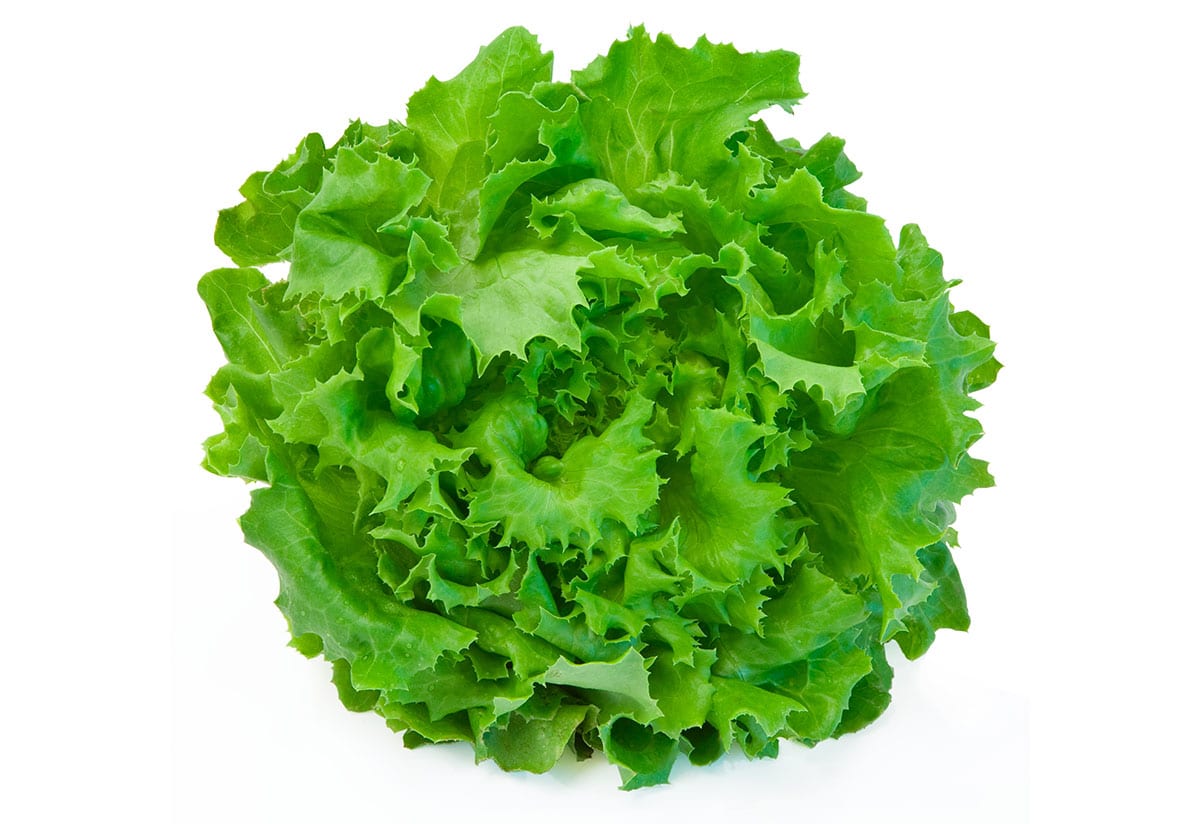
Looseleaf Lettuce
We said upfront that looseleaf lettuce is a broad category of lettuce whose varieties are loosely held together which allows you to cut off individual leaves vs harvesting the whole head as you would say iceberg lettuce. This is a great type for your home garden as it is said to be one of the simplest lettuces to grow, and is in fact the most commonly home grown lettuce. These varieties all share a sweet mild taste even when the leaves are large, making them great added to salad, soup, or as a burger topping. Consider using these leaves in Fresh Lettuce Veggie Wraps though this recipe works great with romaine or butter lettuce as well.
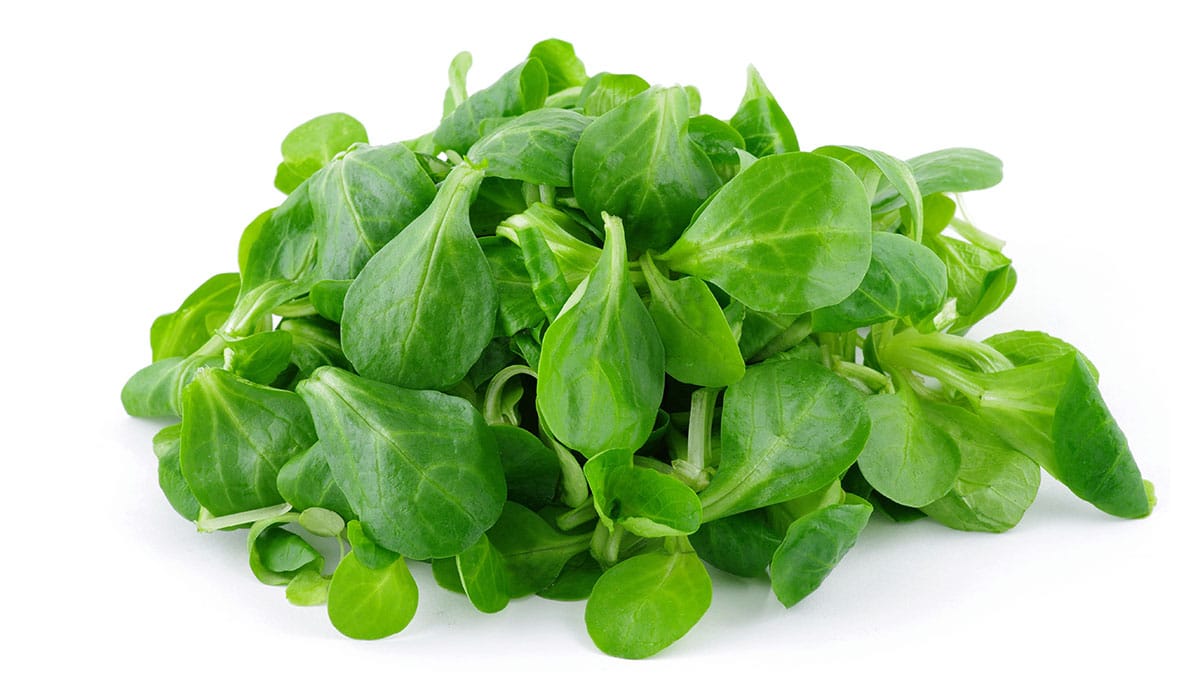
Mâche
Mache is also known as Field Salad. It is a salad green with a sweet flavor making it a good add to any salad. It is a bit expensive and the leaves are small, so it isn’t the variety you want to use as a salad base.
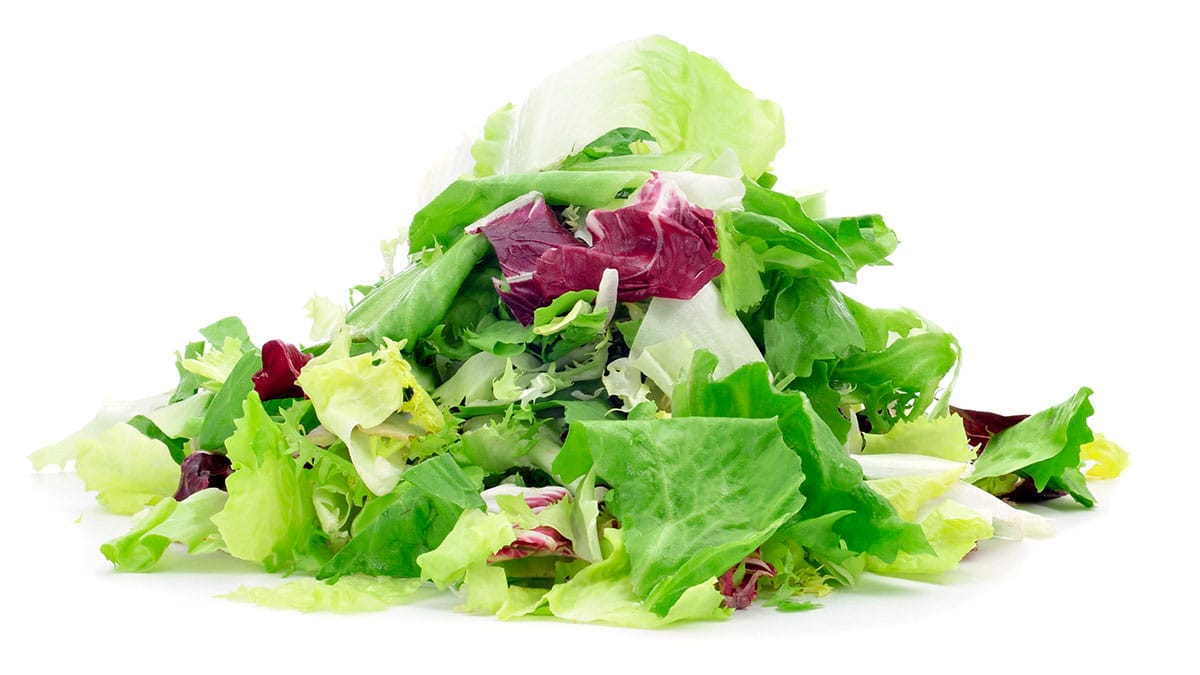
Mesclun
Okay, we are kind of cheating here. Mesclun is not a type of lettuce, but a name for a mix of baby greens sometimes referred to as a spring mix. In your grocery mesclun may include an assortment of varieties and could also include spinach leaves. This is an easy way to get a variety of lettuce types thus leveraging their different tastes and nutritional benefits.
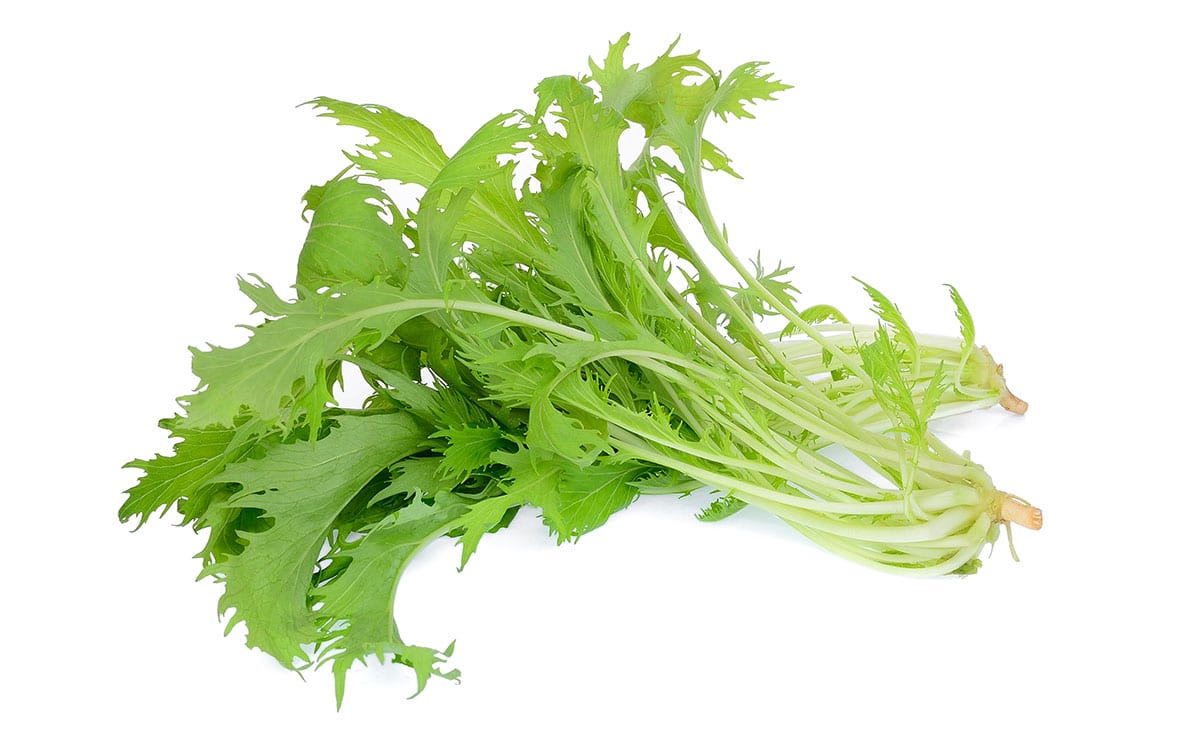
Mizuna
Mizuna is also known as Japanese Greens, Spider Mustard, and California Peppergrass. It is a variety of Asian mustard greens known for a peppery taste and can be almost spicy. You will normally find these greens in a prepackaged salad mixed.
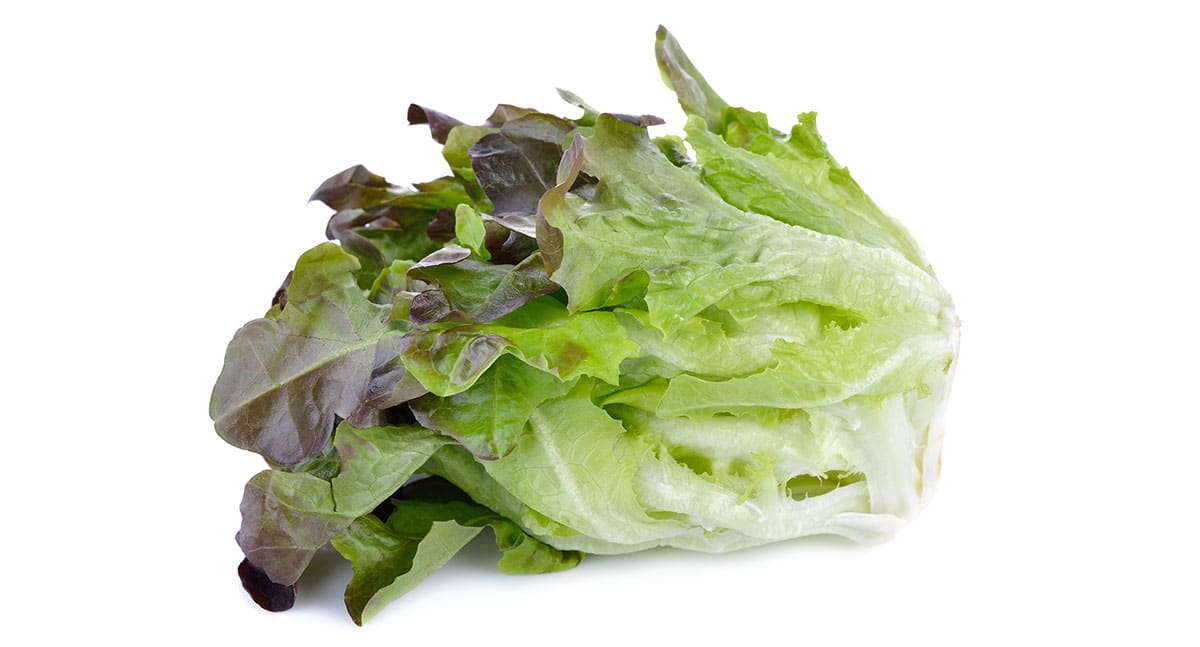
Oak Leaf Lettuce (Oakleaf)
This is a butter lettuce variety that is typically green or red. It is popular as it is easy to grow at home, and can be grown in a pot on an apartment balcony. As a loose growing variety, you don’t have to cut the whole head, but can just snip as many leaves as you want when you need them. The leaves are tender and fairly sweet. As with other butter lettuce varieties, this is a great raw component for any salad or sandwich topping.
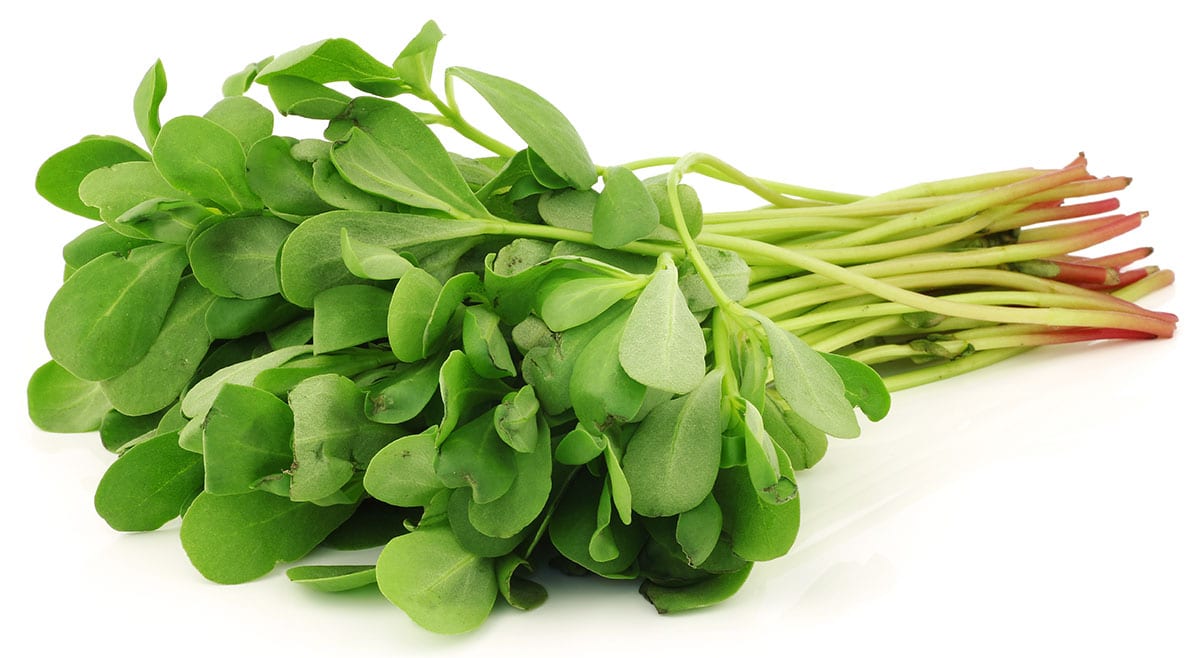
Purslane
Purslane is a salad green known to be sweet and almost juicy. It grows wild, so it is often the target of foragers. Or, you can pick it up at your local farmers market and use it to spruce up your salad mix. Give it a try in place of the spring mix in this Curried Melon Salad.
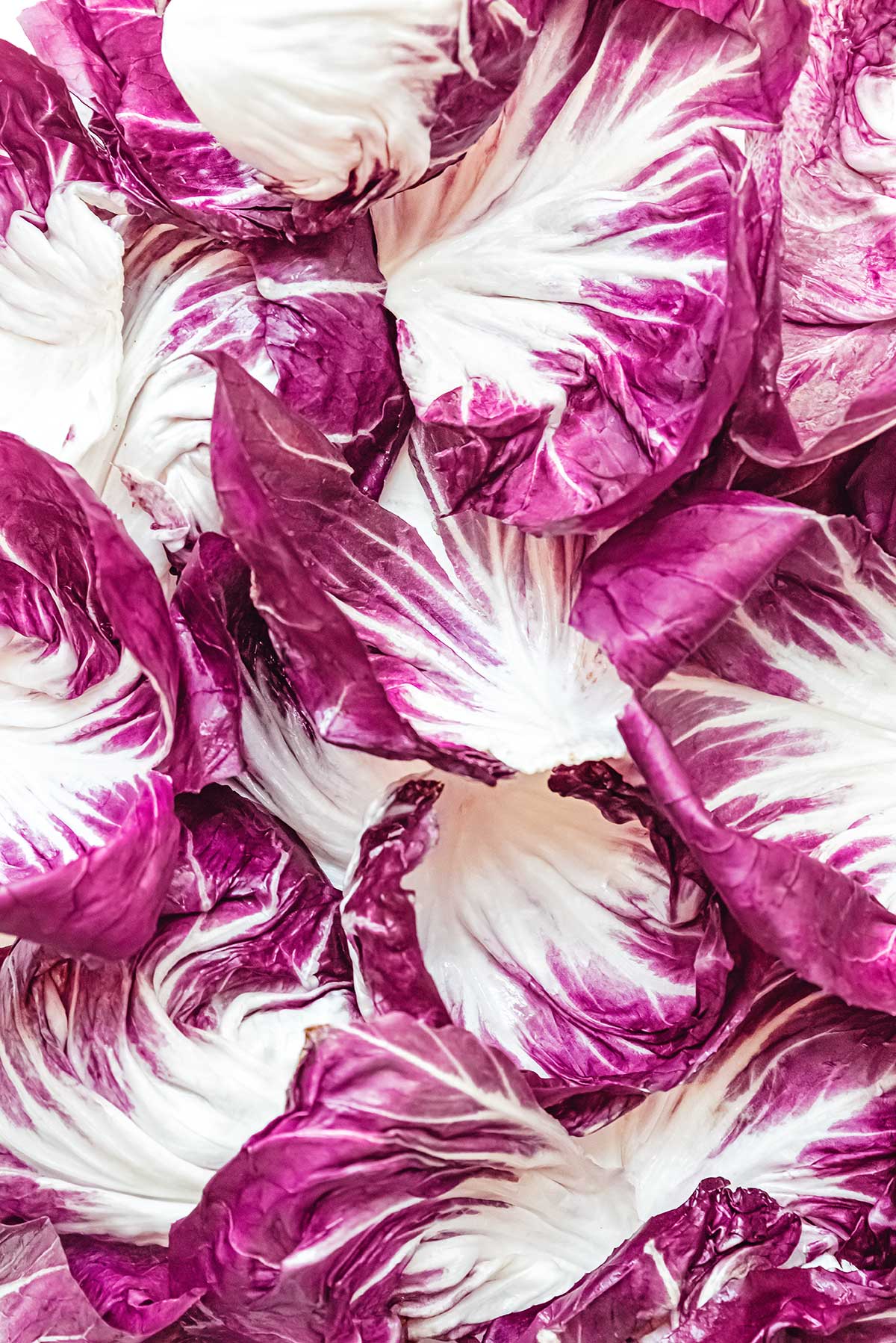
Radicchio
Radicchio is also known as Red Chicory, Red Leaf Chicory, and Red Italian Chicory. The name is pronounced “ruh-dee-key-o”, or just call it red chicory. It is a dark purple or red colored veggie that’s referred to as a lettuce, though it’s actually a chicory or endive.
The flavor is much different than most lettuces and tends to be bitter. You’ll find it in many Italian and Mediterranean dishes. You can eat it raw in a salad, or use it in cooked recipes like pasta or soup. At the grocery look for heads with bright and “firm” feeling leaves. Avoid wilted or soft heads for the best cooking results and flavor!
Radicchio makes a great addition to salads. You can use it as a leafy base or mix it more sparingly with others. It is also good grilled or sautéd which is great for eating the leaves as their own dish topped with parmesan cheese as we do in this Radicchio Pasta Recipe.
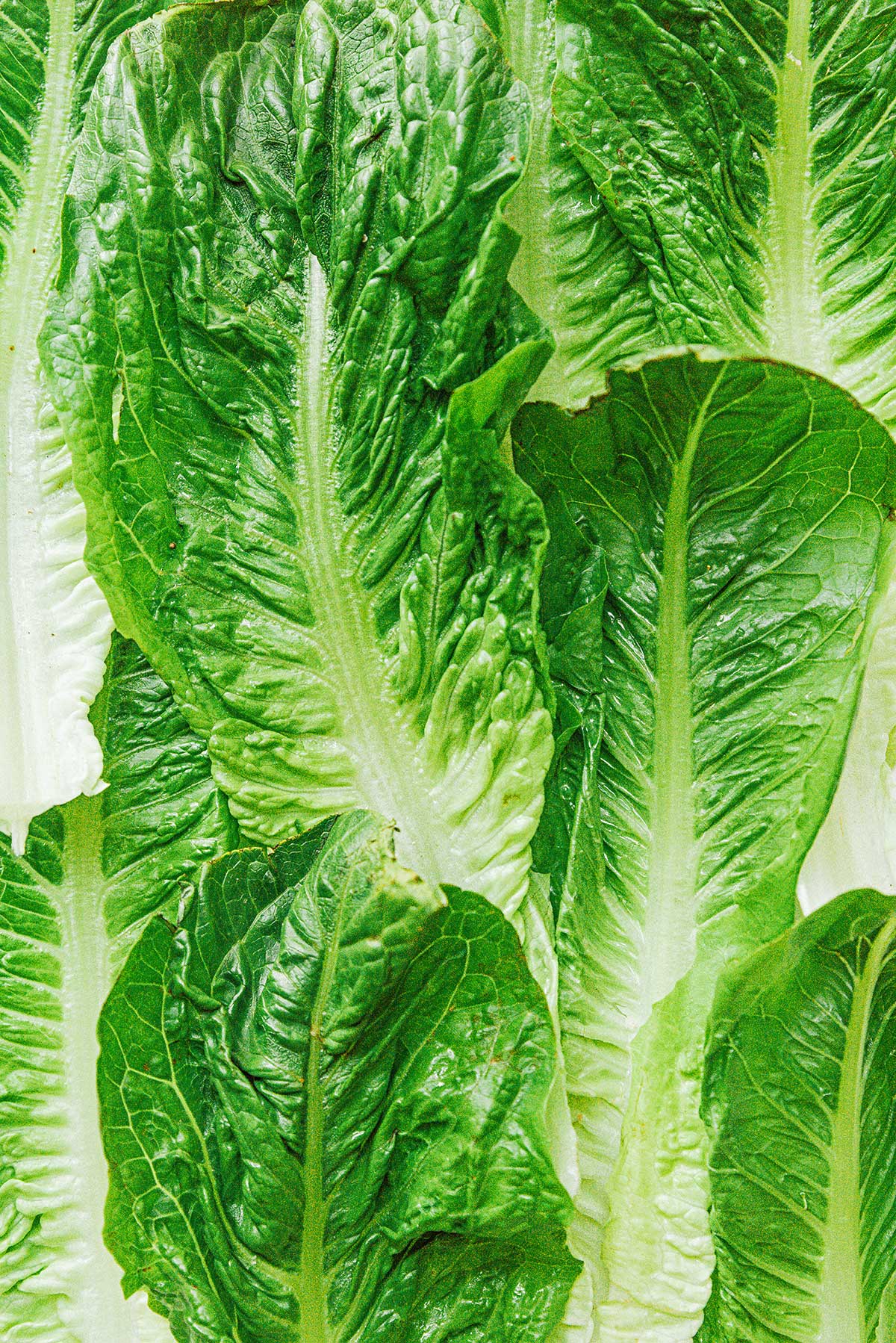
Romaine Lettuce
Romaine lettuce is the ubiquitous lettuce we all depend on for a great salad base, wraps, sandwiches, etc. It is a juicy and crisp lettuce with perhaps just a hint of bitterness (well, perhaps bitter when compared to butter lettuce). The large leaves are stiff enough to use in Lettuce Wraps, and there is just enough bitterness to warrant their long time use in Caesar Salads. Our favorite, however, has to be on the grill as in this Grilled Romaine Salad.
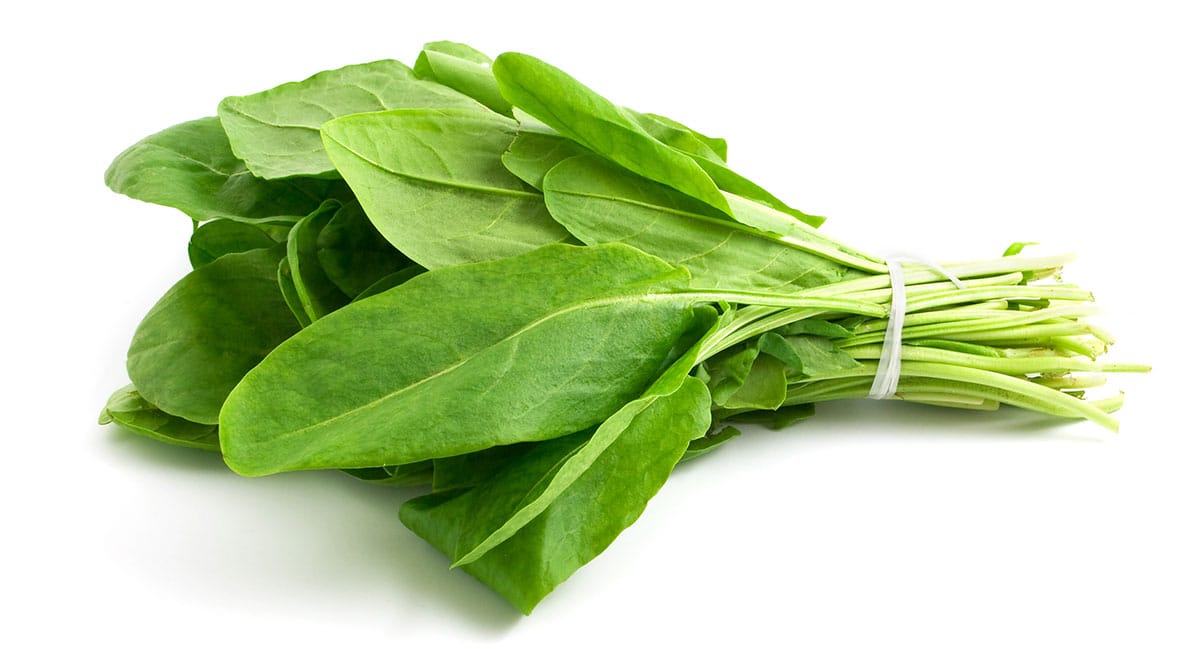
Sorrel
Sorrel is also called spinach dock or narrow-leaved dock. Sorrel originated in Eurasia and has been cultivated around the world for centuries. It is quite sour due to oxalic acid in the leaves which are definitely best when young as they become tougher as they age. Worldwide the most common use for sorrel appears to be in soups and stews.
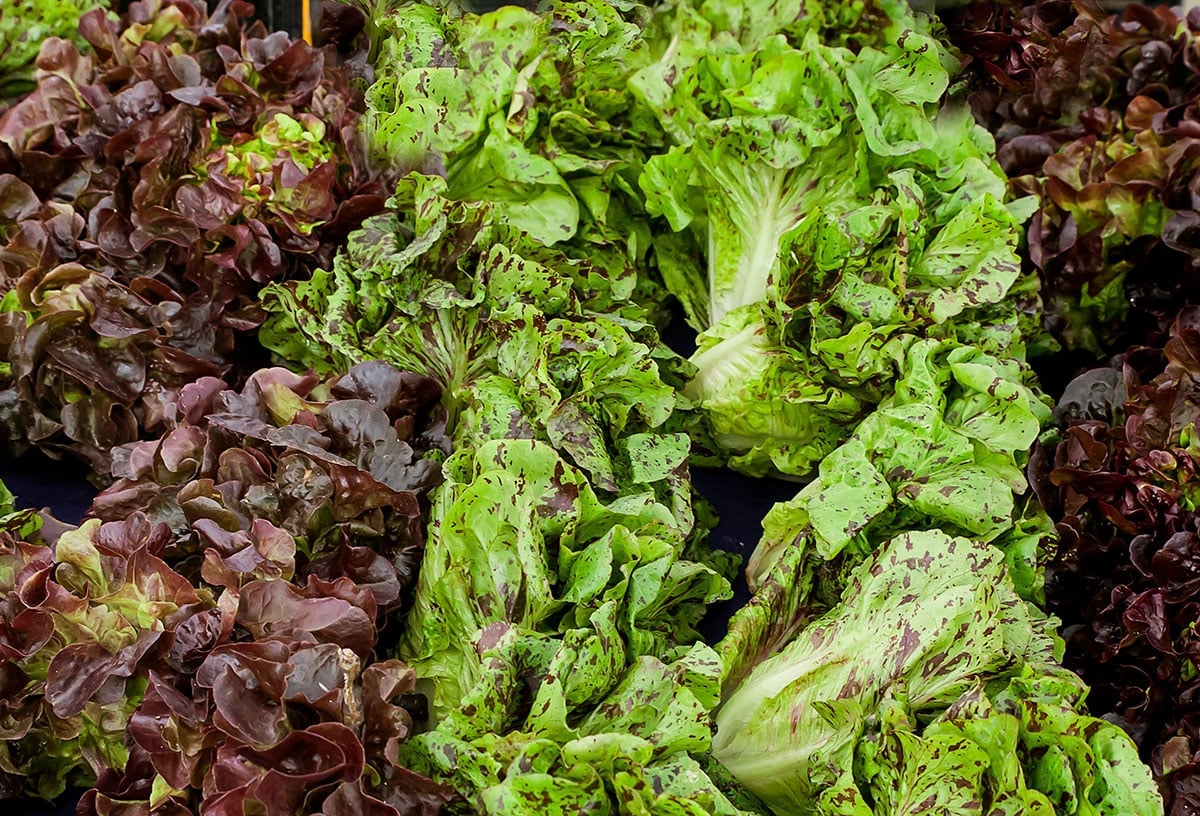
Speckled Lettuce
Speckled lettuce is sometimes called trout lettuce, and appears to have originated in Austria or Germany where it was called Forellenschluss. This simply means “trout’s back” as the green lettuce is beautifully speckled with burgundy spots much like a trout. This is a delicious romaine variant that grows to medium size and is known for its buttery leaves though it is not a butter lettuce variety. We recommend cutting the leaves into smaller pieces and mixing them in salads to showcase their aesthetic appearance.
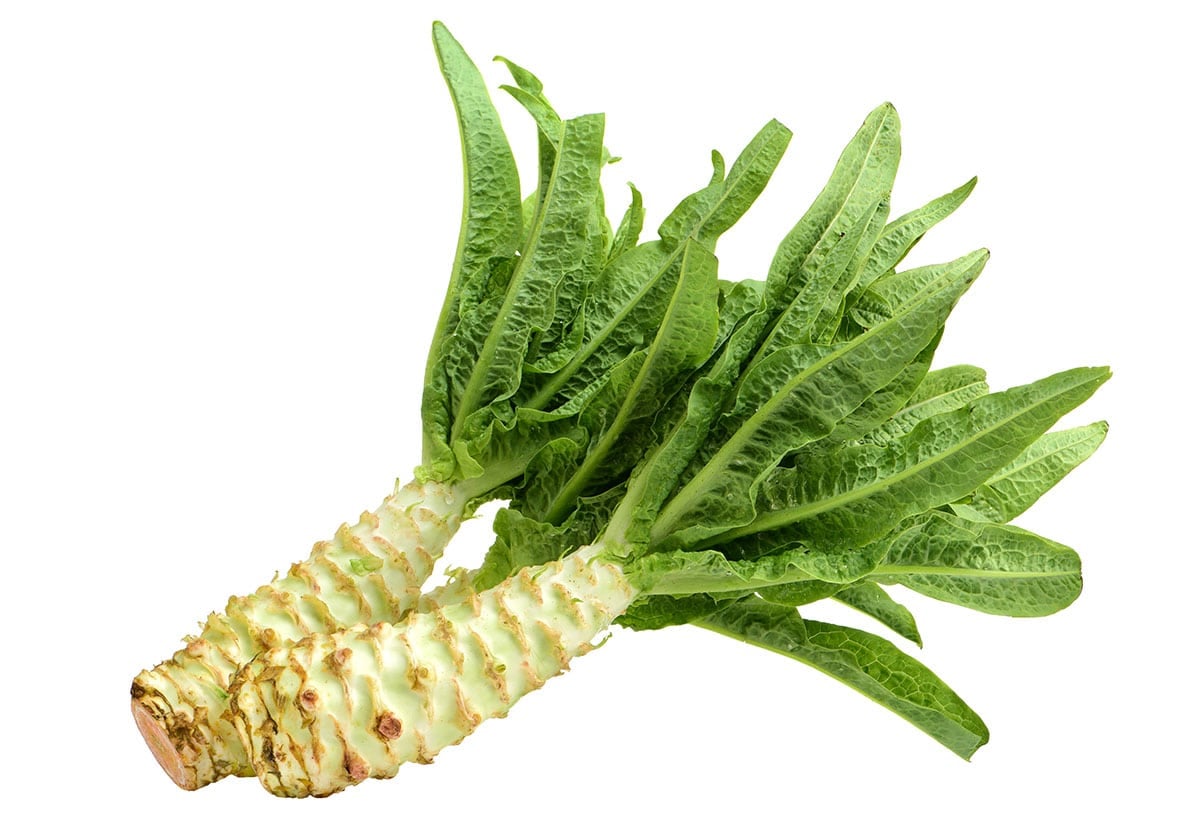
Stem Lettuce
Stem lettuce is also known as celery lettuce, asparagus lettuce, Chinese lettuce, stalk lettuce, and celtuce. It is called stem lettuce because it is grown for its stalk vs leaves. The leaves are perfectly edible, but the stems are often used in stir fries and also used pretty much as you would cooked asparagus. You can substitute these stems into any of these 5 Ways to Cook Asparagus.
Well that wraps up our discussion on different types of lettuce. We hope we presented something you can use in our own cuisine, and happy cooking.
Trivia Answer
The answer is Caesar salad!
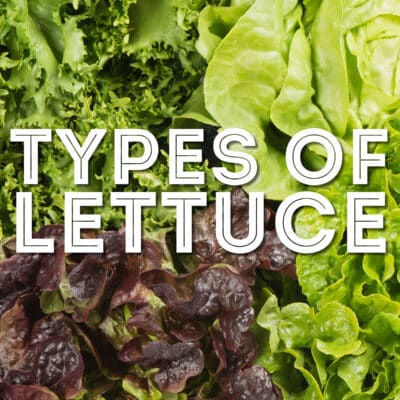
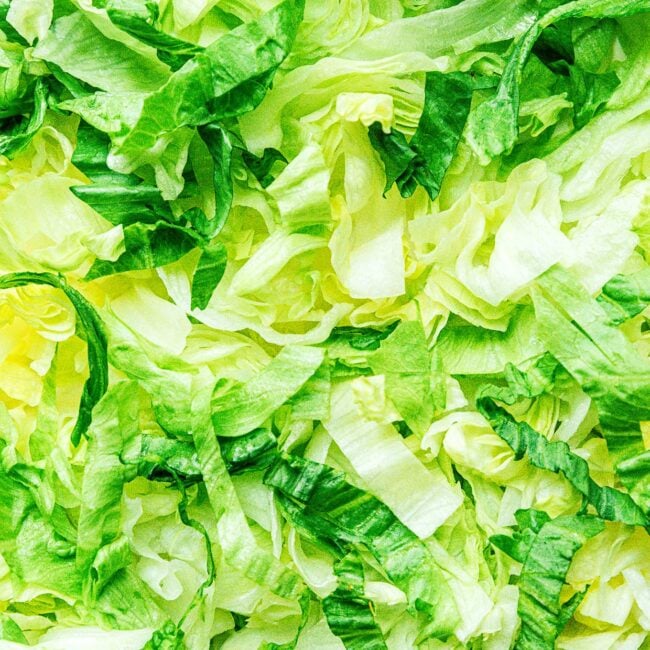
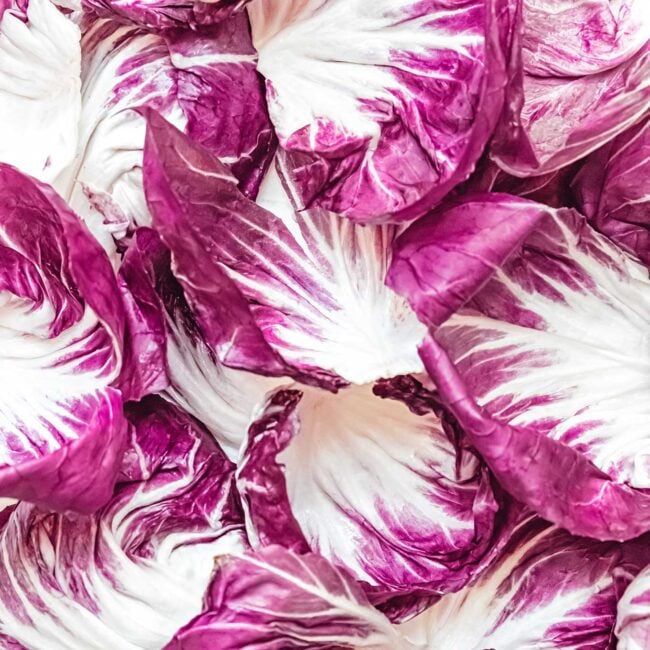
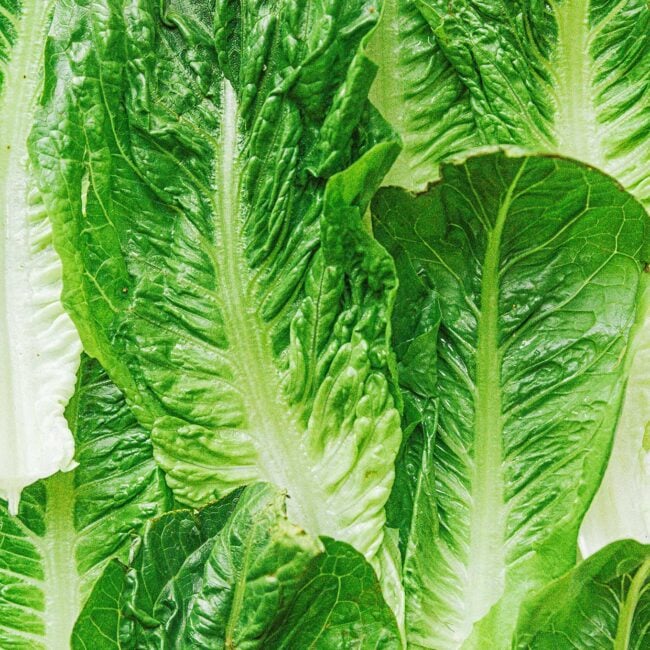
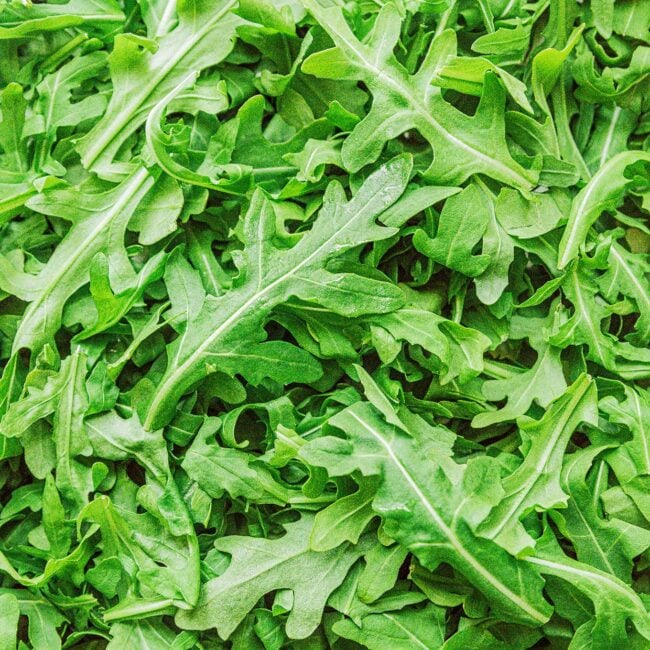
About Creativity says
That’s Good, Keep Going! 💥💥
Captain Lettuce says
Hi! I hope you don’t mind me using your article and images for a game. Ifyou do, please send me an email about that, I’m sure we can work something out.
Sarah Bond says
Hi Captain Lettuce! All of the content on liveeatlearn.com is copyrighted. Please email me to discuss sarah@liveeatlearn.com 🙂